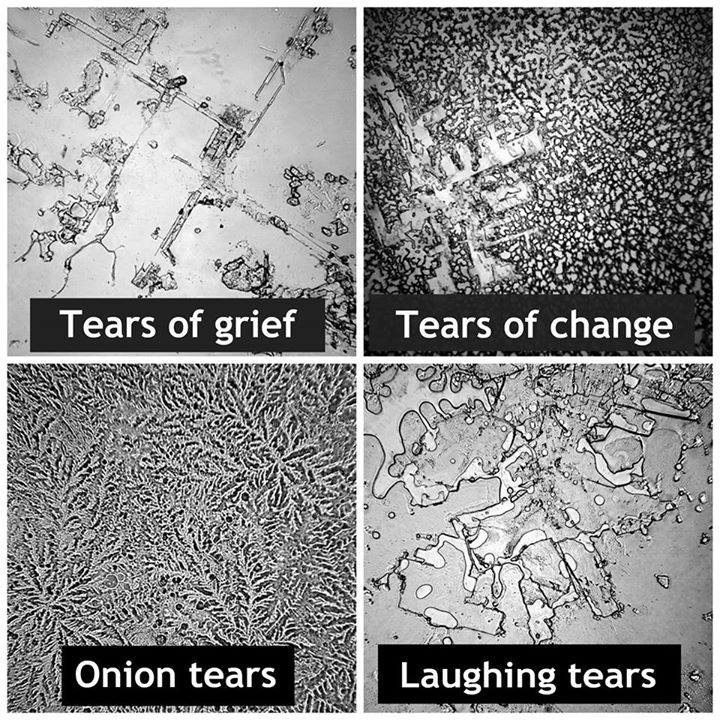

Did you know that your tears have a different structure depending on why you shed them? Rose-Lynn Fisher started a project called “Topography of Tears“ where she took dried human tears and looked at them through a microscope.

Fisher has a history of showing us the world in a new light. In 2010, she showed us a bee as it appears through an electron microscope; this revealed structures of a bee much too small to be seen by the human eye. One day, her musings lead her to wonder what tears looked like up close.

All it took was one tear, the first tear she looked at. Upon seeing t, she stated, “It was really interesting. It looked like an aerial view, almost as if I was looking down at a landscape from a plane,” she says. “Eventually, I started wondering—would a tear of grief look any different than a tear of joy? And how would they compare to, say, an onion tear?” In the end, Fisher captured images of more than 100 tears to reveal their interesting patterns.

Though beautiful, most of the verity of structure in Fisher’s images are probably due to random chance of evaporation and the distribution of the non-water components in your tears. There are three types of tears from a scientific stand point. Basal tears are the tears you are most familiar with – they are the tears that keep your cornea wet, healthy, and clean.
Reflex tears are those you get when the eye is irritated, such as the irritation you get from onion vapor or pepper spray. Psychic tears are the last category, where we find the tears most people think of when we imagine tears, those associated with strong emotional stress (both good and bad emotion).

After looking at tears for several years during this project, Fisher has come to look at them as more than just a salty liquid. “Tears are the medium of our most primal language in moments as unrelenting as death, as basic as hunger and as complex as a rite of passage. It’s as though each one of our tears carries a microcosm of the collective human experience, like one drop of an ocean.”
